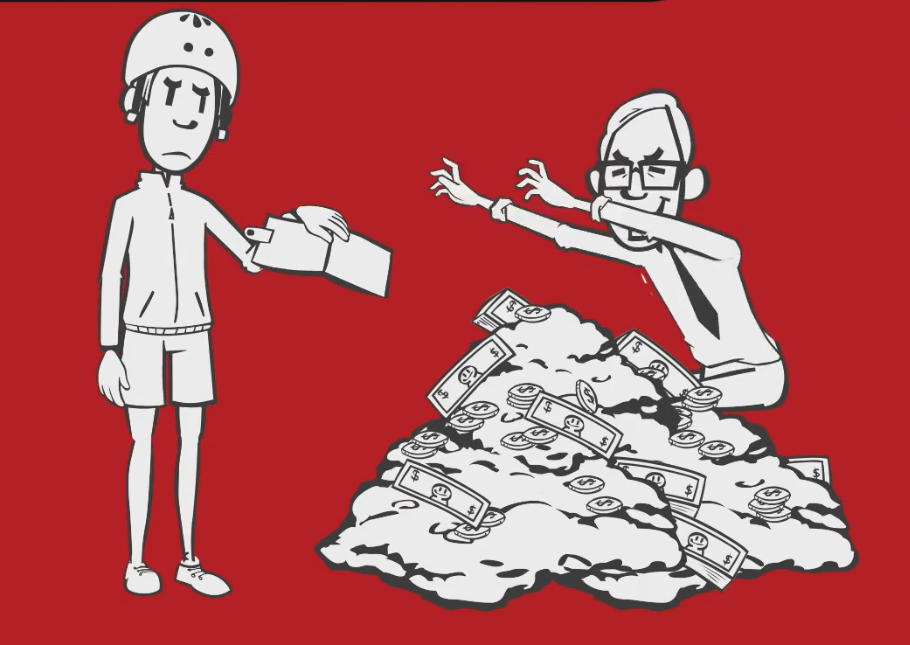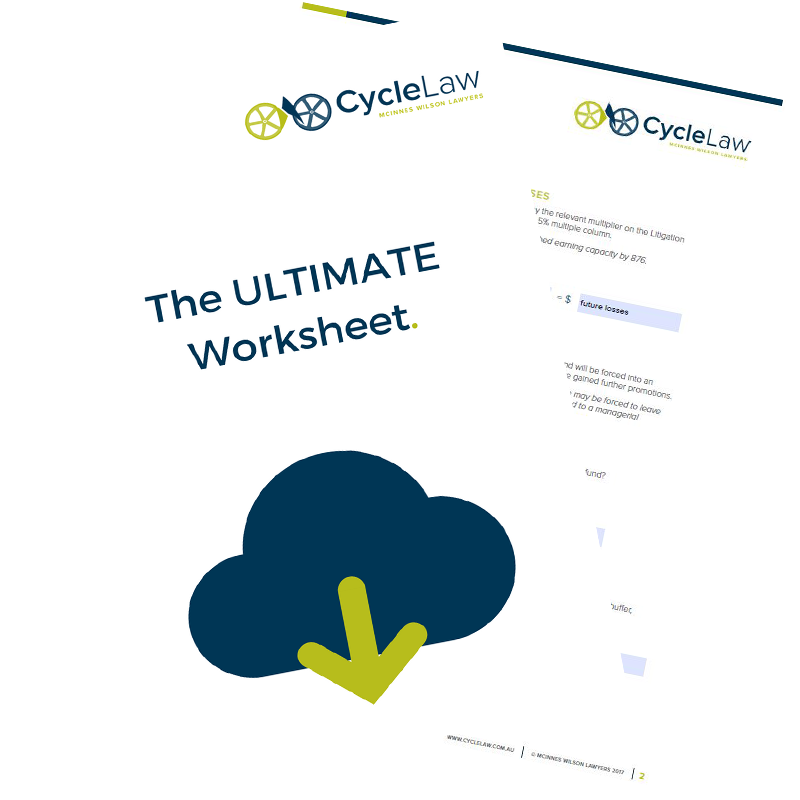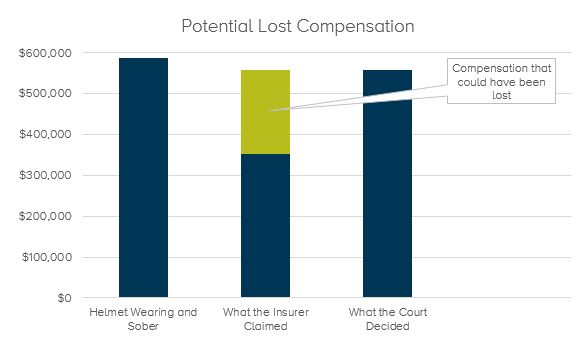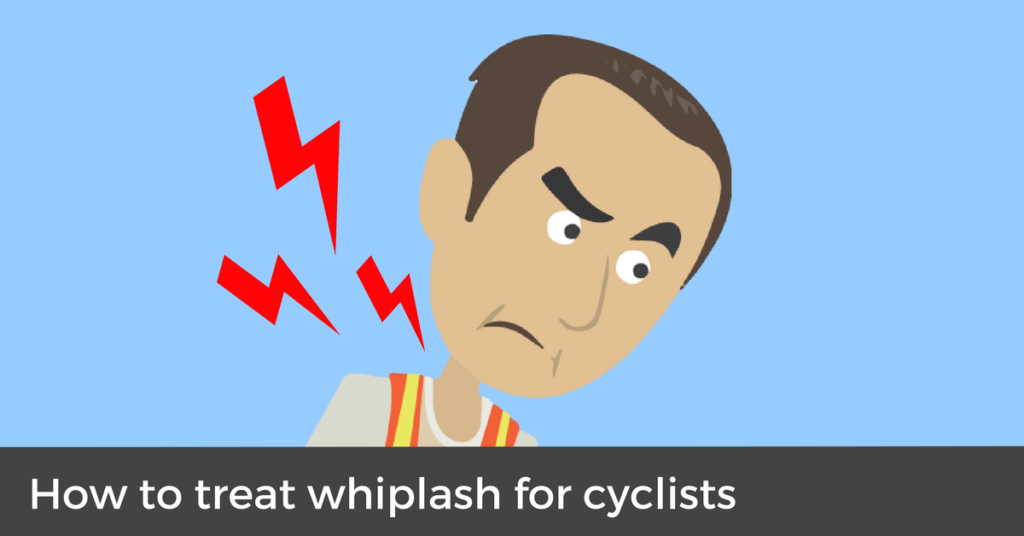
Have you or your cycling mates ever experienced a cycle whiplash?
Recovering from a cycling accident can take months. The recovery time depends on the type of injury, age and any past accidents that you may have had. If you fall off your bike and fracture a rib, it can take up to 12 weeks to heal. This doesn’t take into consideration how you fell and if your fall involved a major whiplash to the neck on impact, especially if the helmet was broken. I find that cyclists can get the all clear from anything serious and after a few weeks of rest go back to training for their ironman or triathlon even, only to find they can’t sit comfortably on their bike or get back to their old training program.
When there is major whiplash to the neck from a cycle accident, the muscles can strain and spasm to protect the neck. These symptoms can arise from a lack of alignment due to the injuries sustained. Symptoms can include and are not limited to the following:
- Headaches
- Shoulder pain
- Muscle spasms
- Difficulty sleeping
- Difficulty concentrating at work
- Numbness in the arm or hands
Instead of expecting the pain to disappear, it is important to have your posture, spine and muscles checked to see if it is out of alignment. After all, isn’t your body worth more than your bike?
At Kurilpa Chiropractic & Sports Massage, we take a thorough history of the mechanism of your injury and any contributing factors that may be causing the pain and discomfort. It may be necessary to send out for scans or x-rays prior to treatment, including any reports from other health professionals.
It can take up to 3 months of regular chiropractic, sports massage and trigger point therapy to ease the body back into repair and re-alignment.
[h3_heading]Some things recommended to cyclists to support the treatment are:[/h3_heading]
- Placing heat packs or a wheatbag around the shoulders and neck to relax the muscles.
- Having a warm bath with Epsom salts 3 times a week.
- Performing your own trigger point release on the neck.
- Making sure your work desk and chair are ergonomically correct.
- Gentle motion of the neck to include flexion and extension, rotation and lateral flexion without causing any pain.
- Taking regular breaks every hour at the desk.
Written by Dr. Adele Lorigan (Chiropractor)
Dr. Adele Lorigan (Chiropractor) is part of Kurilpa Chiropractic & Sports Massage is based inside Cam’s Cycle Coaching, West End.

The Facts
Gary Land was leading a single file peloton along the left shoulder of Airport Drive, Eagle Farm when a taxi veered directly in front of him and slammed on the brakes. Mr Land hit the rear of the vehicle and was thrown over the boot of the car.
Unfortunately, as is common in claims brought by cyclists, Gary suffered significant injuries to his back and one of his knees. He now also suffers post-traumatic headaches.
Mr Land made a claim for personal injuries against the negligent taxi driver.
The Judgment
The taxi driver tried to argue that Gary contributed to the accident by cycling negligently. However, there was no evidence of this at all and the driver eventually admitted that the driver was wholly at fault.
There was no way Gary could have avoided the collision. This made the Court’s job easier – the Judges were only required to consider the medical opinions about Mr Land’s injuries and to decide his loss of earnings.
The assessment of damages in Gary’s case was complicated by a history of injuries to his back and left knee...
About 3 years prior to the accident, Mr Land had a disc removed in his back and had surgery to relieve a pinched spinal nerve. The Court found that Mr Land had aggravated his previous injuries in the accident, and awarded an amount of $35,000 in general damages.
The Court also found that Gary’s capacity to earn income was reduced by 45% as a result of the injuries he sustained in the accident. At the time of the incident, Mr Land owned and operated Cycle Scene at Victoria Point. After the accident, Gary sold the business because his bad back stopped him from being able to longer carry out necessary tasks. Gary started operating a “pro bike fit” business from his home. At the date of the trial, he was almost 48 years old and would probably have worked until the age of 63. The Court assessed his future economic loss at $150,690.00.
After a three-day trial, Mr Land was awarded $382,690.00.
Expert Opinion
This was a great outcome for Gary. However, the damages awarded did not include any amount for past or future gratuitous care and assistance.
This is because the Court was unable to assess the amount of care and assistance that Gary required after incident or would require into the future.
Before the accident, Gary was solely responsible for washing the family cars, tending to the garden and washing up. He shared the house cleaning and grocery shopping with his wife.
Gary told the Court that after the accident, his wife had had to take up a more significant part of the housework, help him with his personal grooming and take care of the couple’s 4-week-old daughter.
However, the Judge needed to see a proper estimate of the hours Mrs Land spent providing care and assistance to Mr Land.
The Judge said:
“there was no detailed evidence before me from which I could even start to make an assessment”.
The Judge pointed out that the claim that Gary's wife had provided an estimated 45 days of care to Mr Land was not at all helpful.
If the hours of care and assistance Mr Land received had been set out in detail before the Court, he could perhaps have been awarded damages for that past care as well for the care he will require in to the future.
Care is often disregarded or forgotten by many claimants – in fact it only constitutes 1.549% of the average claim.
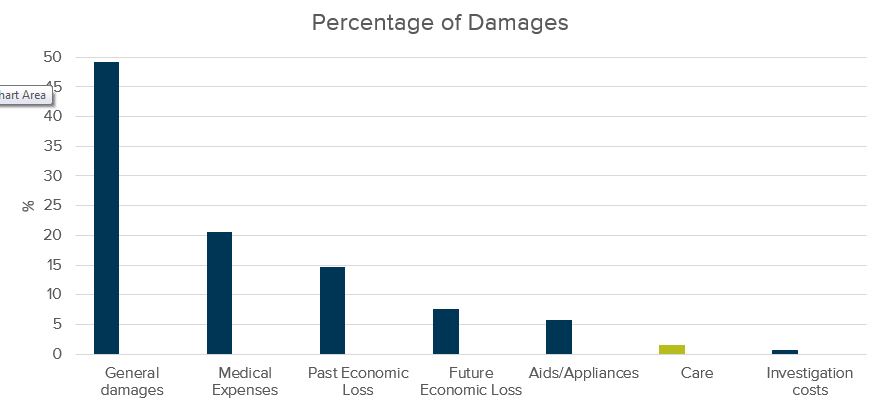
In my honest opinion, if claimants were meticulous and thorough in recording their care, it would be easy to increase this figure and not leave that money on the table.
The Consequences
If you are injured in an accident, it is important that you keep a record of all the care and assistance you receive – from friends and family as well as hired help.
For example:
- if you usually mow your lawn but because of your injuries you have to hire a gardener, make sure you keep the receipts
- if you are usually in charge of cooking the family meals but you can no longer do so, make a note of how much time your partner spends cooking those meals
- if you usually share the grocery shopping with your partner but now they have to go alone because you can’t walk, write down how much time that shopping takes.
Written by Claire McHardy | Solicitor
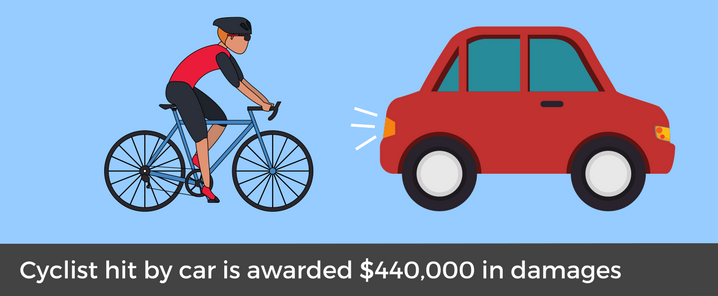
The Facts
Jason, an active and fit 37 year old, was a passionate cyclist. He rode his bike to and from work every day. On the morning of 26 November 2014 Jason was cycling to work on his normal route. As he was riding on the left hand side of Noble Street in Windsor, QLD, a vehicle has suddenly and unexpectedly reversed out of the carpark and directly into Jason’s path.
Jason hit the brakes and attempted to swerve around the vehicle however he was unable to avoid a collision. He collided with the rear back passenger side of the vehicle which caused him and his bike to be thrown over the boot of the car and onto the roadway.
Jason sustained a number of injuries in the accident including:
- fractures to his neck;
- fracture to his right wrist;
- microfractures to his left knee; and
- bursitis to his left elbow.
Jason pursued a personal injuries claim against the CTP insurer of the vehicle that collided with him.
Want to know how to stop lawyers overcharging?
Watch our step-by-step video guide and discover:
- How lawyers charge
- Where and when you can negotiate your costs
- How to save yourself tens (even hundreds) of thousands of dollars in legal fees
Not watching the video may be the most expensive mistake of your life.
The Outcomes
At the time of the accident Jason worked as a Project Manager in the oil and gas industry. He was earning approximately $3,000 net per week. Jason was required to take about 3 months off work as a result of his injuries. He recommenced his employment on a graduated return to work program.Jason found that his neck injury in particular continued to cause him problems. He found he was…
- less efficient;
- less productive; and
- less suited
…to working the long hours required of him in his position as a Project Manager.
Following Jason’s return to work there was a decline in the oil and gas industry and as Jason was struggling with his task load and was made redundant shortly after returning to work.
Due to Jason’s ongoing symptoms he was no longer suited to his role as a Project Manager. Prior to the accident Jason was a highly driven man who had ambitions of progressing his career within the oil and gas industry. His ultimate goal was to progress to the position of COO or even CEO. This career path was no longer possible for Jason.
Jason was unemployed. He needed to find a form of employment that would provide him flexibility in his working hours so he could manage his ongoing symptoms. He therefore embarked on setting up a home-based online retail business and a consultancy business.
To progress his claim, Jason needed to document what his plans were prior to the accident and how his career ambitions would be affected by his injuries. He also had to obtain the evidence to support those claims.
To do this he contacted a past general manager and the current COO of the oil company he had worked for prior to the accident. From those conversations Jason was able to establish that an employee at the company with comparable skills to Jason took over his role and continued to be employed by the company. This evidence was used as a predictor for what Jason would have been capable of had he not sustained his injuries in the accident.
After supplying the insurer with the evidence to support his claim, a conference with the insurer was held. Jason was able to successfully resolve his claim at that conference for a sum of $440,000.
Cycle Law's Opinion
This case is a good example of how to settle a case on the best possible terms at the earliest opportunity. Unless you support your claims with solid evidence, an insurer will not agree to pay you the compensation you deserve.
The key to receiving a good award for damages is the evidence you gather to support your case. Every person will be impacted by their injuries in very different and specific ways depending on their circumstances.
Cyclist Casualties
Jason’s case is not an isolated one. Cycling has become a common and efficient mode of transport for many people. However, there are many associated safety risks for cyclists on our roads. Cyclists continue to remain vulnerable on our roads and errors by motorists that may result in a minor incident for a motor vehicle user can have major consequences for a cyclist.
The Department of Infrastructure and Regional Development has published data concerning the percentage of traffic crash casualties as a result of cycling. The table below sets out the fatalities and injuries (hospitalised and police-reported) arising from cycling accidents on our roads between 2003 and 2014:
Due to an increase in the amount of people cycling on our roads, traffic crash casualties relating to cyclists has been slowly increasing from 12.8% in 2003 to 16% in 2011-12.
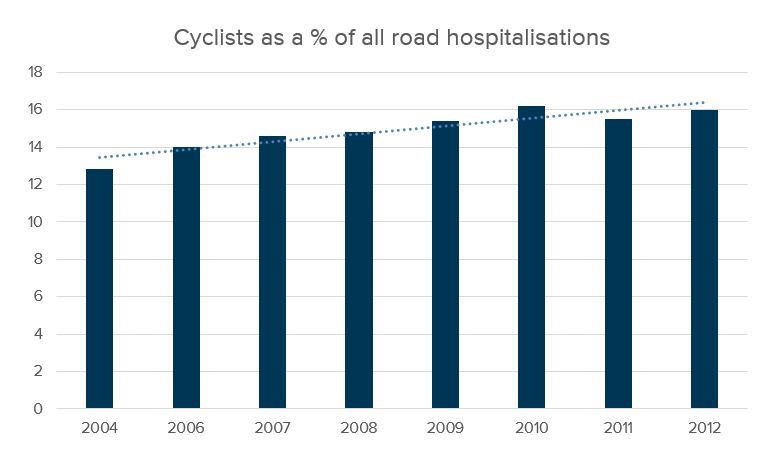
Cyclist road safety and the one metre breach rule
In an effort to provide more safety to cyclists on the roads, the one metre breach rule was introduced in Queensland in 2014. With the introduction of this rule drivers must ensure they keep a distance of at least one metre away from cyclists in 60km/hour zones and 1.5 metres from cyclists in zones with greater speed limits. If they do not it is now considered an offence and they risk being charged by the police.
The introduction of this law is an important safety measure for cyclists to increase the awareness of motorists. It means that motorists are more likely to keep a lookout for cyclists on the roads. Unfortunately however, cyclists such as Jason continue to be injured by motorists who fail to keep a proper lookout for cyclists.
It is important to know that if you are injured in a cycling accident through the fault of a motorist, there are avenues you can take to assist with your recovery and be compensated for your injuries.

The Facts
Asif Ahmed, a 47 year old lawyer in the UK, had owned a mountain bike for 12 years. He had regularly ridden his bike on the road but had only ridden off road on a few occasions. He had never ridden his mountain bike in rough terrain. He decided to pursue his passion for mountain biking by undertaking a course in off road mountain biking. He found and paid for a course online. The mountain biking course was designed for beginners.
On 25 March 2012 Asif attended the course. As part of the course the instructor, Leon McLean, took him to a section of the bike trail known as BKB or “Barry Knows Best” which consists of a single track that descends through wooded terrain. The group commenced riding on BKB with Leon until they arrived at a steep gully. The instructor provided a bit of training at the top of the descent before asking each of them to ride down the steep gully.
Asif’s first attempt was successful however he was a little shaky and had to steady himself from falling from his bike. He was advised by the instructor to have a second attempt. On this attempt the instructor told Asif to start riding his bike some way back from the edge of the gully so he could gain some extra speed prior to his descent down the gully.
Asif made a second attempt. He aimed to do what the instructor had told him and increased his speed. As he rode over the top of the slope he mistakenly took a different path down the track because he was unable to see over the top of the gully as he approached it. As he descended down the slope his bike slammed into a grassy mound causing him to be catapulted through the air, over the handlebars. He landed heavily on his neck and lay still. As a result of the accident, Asif became a paraplegic.
Asif sued the riding instructor for negligence and/or breach of contract.
What the Courts in the UK found
This case was heard before Mr Justice Jeremy Baker in the England and Wales High Court. On 10 November 2016 Justice Baker handed down his decision in relation to the issue of who was at fault for the accident.
Asif’s lawyers provided evidence at the trial from William MacKay who had been involved in mountain bike training for over 30 years. Mr MacKay gave evidence to the court that…
Asif did not receive appropriate instruction and training before attempting to ride down the steep gully.
The lawyers for Leon McLean provided evidence at the trial from Richard Martin, who was a technical leader in the field of mountain bike coaching. Mr Martin gave evidence to the court that Asif had received adequate instruction to enable him to ride down the gully safely.
Justice Baker noted that the reason for Asif booking into the course was not to have a thrilling day out but rather to ensure he could pursue his passion for mountain biking in a safe and effective manner. He accepted that Asif was not an experienced mountain bike rider and that prior to this course he would not have known how to safely ride a mountain bike on this type of steep terrain.
The trial judge accepted the evidence of Mr MacKay over Mr Martin and formed the view it was essential for the instructor to make sure he tailored the course to ensure the safety of the most inexperienced riders. He found that the instruction given to Asif by Mr McLean was inadequate.
The trial judge held that...
Asif was not the ‘author of his own misfortune, and therefore liable for the accident’.
He held that Mr McLean was also responsible for Asif’s accident because he did not carry out his instruction with ‘reasonable skill and care’.
The trial judge did find that Asif was partly responsible for his injuries because he did not inform the instructor that he felt the ride down the slope was beyond his capacity. He therefore found that Asif had contributed to his accident. He found that Asif was 20% responsible for his accident and Mr MacLean, the instructor, was 80% responsible for Asif’s accident.
Statistics for spinal cord injuries sustained in Australia
Spinal injuries from cycling accidents in Australia are not uncommon.
According to the national statistics for spinal cord injuries from case registrations to the Australian Spinal Cord Injury Registry approximately 80% of all spinal cord injuries sustained in Australia were caused by traumatic injury such as accidents.
The graph below represents the different causes of spinal injuries recorded in Australia:
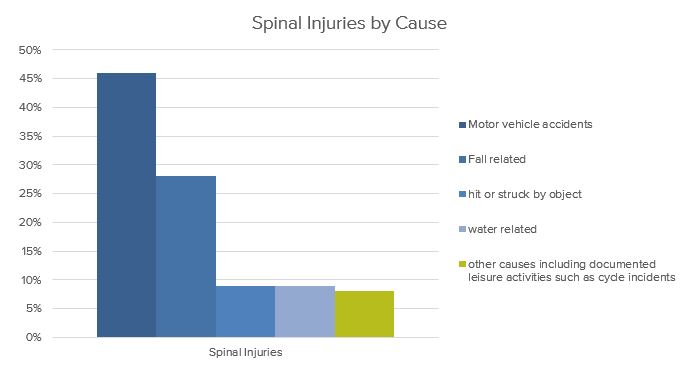
8% of spinal injuries in Australia are cause by leisure activities
Leisure activities which includes cycle related injuries has been documented under other causes and represents 8% of all spinal cord injuries sustained in Australia.
What would happen in Queensland?
If this situation arose in Queensland it is possible that a claim could be made for negligence against the instructor. However, the injured person would have to overcome the Civil Liability Act 2003 (Qld). This Act contains a specific section that allows a person to escape responsibility for the injuries of another if it can be shown that the injuries were sustained due to an obvious risk resulting from a ‘dangerous recreational activity’. A dangerous recreational activity in Queensland means ‘an activity engaged in for enjoyment, relaxation or leisure that involves a significant degree of risk of physical harm to a person’.
It would most certainly be argued that mountain biking would fall into this category and therefore this section would be difficult to overcome. However, in the situation of Asif, he had paid for and was participating in a course under the guidance of an instructor. In those circumstances, a person in Queensland may be able to successfully bring a claim against the instructor for breach of contract. A claim made for breach of contract means that the Civil Liability Act 2003 would not apply.
What that means for Queensland mountain bike riders
In Queensland, if someone pays for and undertakes a particular type of instruction course and suffers injuries during that course, they may be able to successfully sue the instructor for a breach of negligence and/or breach of contract.
However, it will really depend on the circumstances surrounding the accident.
Written by Sharee Yauga | Paralegal
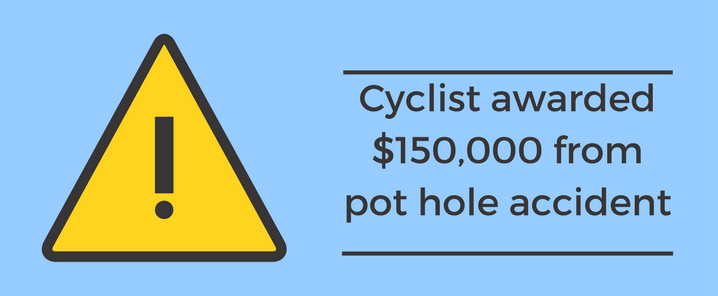
[h2_heading]The Facts[/h2_heading]
Tom was cycling along a main Brisbane road with his mate. As a professional athlete, he had taken this route many times before. However, on this particular day, Tom struck an uneven section of the road and was thrown from his bicycle.
Tom injured his spine and pelvis, and the bitumen left his skin torn and bruised.
From a distance, the deformity in the road was hard to see. But it clearly posed a risk of serious injury to cyclists.
Tom had to give up the sport he loves so dearly, as well as the sponsorships and prize money that came with his success. Instead, he had to focus on a rehab program and get a desk job.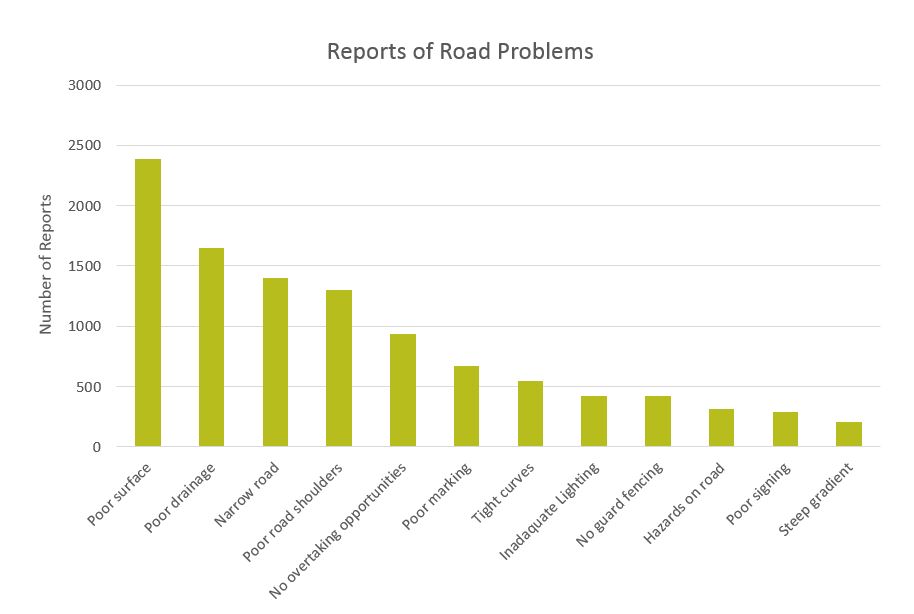
Tom now suffers through persistent tightness and pain at work. He may not be able to put in the hours he needs to to get promoted. He will probably also require commercial assistance in future. Tom’s life has been changed because of this accident.
[h2_heading]The Outcome[/h2_heading]
We argued that the local Council knew about the problem with the road. There was evidence to show the Council had meant to have the roadway fixed months before Tom’s accident.
Importantly, Council tried to argue that Tom had been cycling at speed. Tom’s mate was able to back up Tom’s claim that he was only travelling at about 35km/hr.
After some negotiations, Tom settled his claim outside Court. Council paid $150,000.00 in damages.
Don't read this unless...
You are wondering how the Courts calculate compensation, download this free 'Economic Loss Worksheet'. Discover the simple calculations that will estimate the value of any compensation claim in 10 minutes.
[h2_heading]Cycle Law’s Opinion[/h2_heading]
This was a great outcome for Tom. It meant that he did not need to go through a lengthy trial.
The amount was calculated by reference to the impact the injuries will have on his future earnings and the care he will require, amongst other things. It is important to note that each unique set of circumstances will have a different outcome.
For Tom, although he had to give up his dream of cycling for Australia, the compensation he received meant he was able to get on with his life as soon as possible. Tom has now found a new career he loves.
However, claims like Tom’s are difficult to run. Local Councils have a limited amount of funds, and cannot be expected to keep every road in tip-top condition at all times. Instead, Council’s prioritise the roads that need fixing. To win a trial like this, you would need to prove that Council knew or ought to have known about the issue, and had the funds to fix it.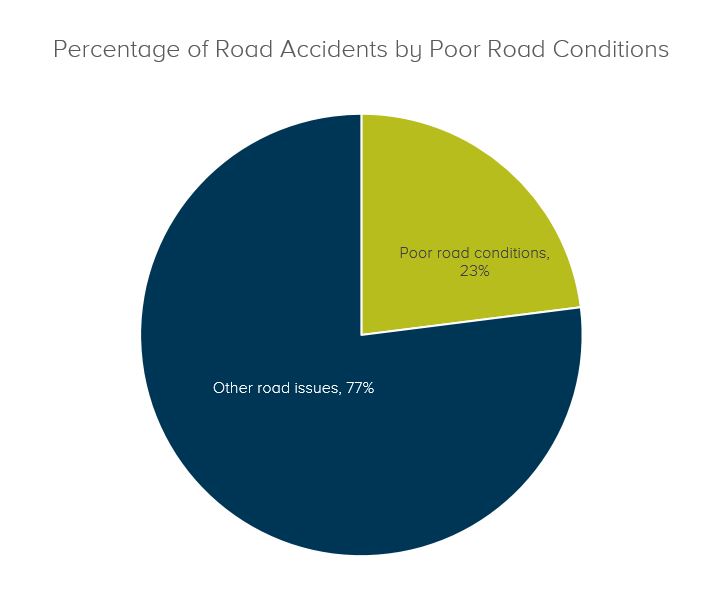
It is also important to collect evidence from the day of the accident.
There are four pieces of evidence that are vital for proving the Council is at fault:
- Strava data (GPS tracking of your ride)
- Pictures of the road
- Pictures of the injuries are all helpful
- Written notes or recordings of what happened at the time of the accident
This is especially important if no one saw what happened. If Tom’s matter had gone to trial, strava data of his trip that day would have been vital.
[h2_heading]The Consequences[/h2_heading]
Tom’s claim shows that it is possible to get a good outcome for cyclists unlucky enough to strike a pothole, shove or uneven road surface and sustain an injury. If this happens to you, it is important that you gather as much evidence as you can from the scene.
Written by Claire McHardy | Solicitor
IF YOU HAVE MORE QUESTIONS, GIVE US A CALL.
Most queries can be answered easily in under 15 minutes.
IF NOW IS NOT A GOOD TIME TO CALL...
Give us your contact details and we can ring you back to answer your questions. It's free.
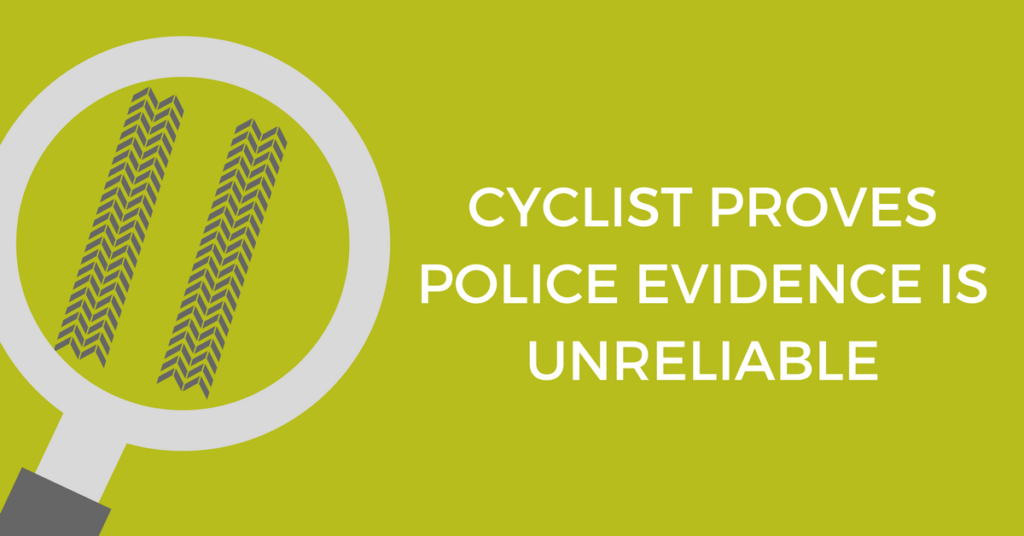
The Facts (Nominal Defendant v Rooskov)
On 18 May 2005, Nigel rode his mountain bike to the local bowls club. Whilst at the bowls club he drank approximately 6 to 8 schooners of beer. Between 3.30pm and 4.30pm that afternoon he left the bowls club on his bike to ride home. He was not wearing a helmet.
It was a fine sunny day and Nigel was riding along the left-hand side of the roadway. He was riding downhill on a straight section of the road. As he was riding along, he heard a whistling noise from behind him, a screech of brakes and was then struck from behind. A vehicle hit the rear, right-hand side or back of the bike (Nigel was not sure which). This caused him to careen off the road. Nigel was thrown from his bike and landed in a ditch. He was knocked unconscious and sustained severe injuries to his back in the accident.
Nigel was found by people passing by who called the ambulance and police. He was transported to Wollongong Hospital for treatment and was subsequently diagnosed with a severe concussion and post-traumatic amnesia.
Want to know how to stop lawyers overcharging?
Watch our step-by-step video guide and discover:
- How lawyers charge
- Where and when you can negotiate your costs
- How to save yourself tens (even hundreds) of thousands of dollars in legal fees
Not watching the video may be the most expensive mistake of your life.
The Decision
One of the main issues at the trial was whether Nigel had been struck by an unidentified motor vehicle. It was argued by the Nominal Defendant that he lost control of his bicycle and ran off the road.
Nigel initially reported that he was struck by a vehicle. This was noted in the ambulance records, police records and initial hospital records. However, at the hospital his memory of the accident became vague and he expressed doubt about what had happened. He reported that to nursing staff, doctors and the police.
A police officer attended the scene of the accident that evening. He examined the scene and took a number of photographs. He also took photographs of the bike and noted there was no damage sustained to the bike. He did find skid marks located at the accident scene but dismissed them as being unrelated to the accident. The officer gave evidence at the trial that he was of the view that Nigel had not been hit by a motor vehicle.
Nigel’s father, a retired police officer, attended the accident scene two days after the accident and undertook his own investigations. That included taking a detailed sketch plan of the accident site with details of all relevant measurements of the area and the skid marks located at the accident scene. He also reported that the skid marks were very dark at that time and faded over the course of the next week.
Nigel gave evidence at the trial in which he maintained he had been hit by a vehicle. This was despite the fact that he later lost his memory whilst in the hospital and became unclear on what had happened.
Despite the evidence of the police officer at the trial, the judge held the following view:
“The difficulty I have with the skid marks is that they were consistent in location and presence and time with the sworn evidence of the plaintiff and consistent with versions he had given at various times….”.
Nigel’s evidence, the records given to the various medical personnel and the skid marks, persuaded the judge that Nigel had been hit by an unidentified vehicle. The judge awarded damages to Nigel for his injuries in the sum of $586,781.24 but deducted 5% of his damages because he was not wearing a helmet.
The Nominal Defendant appealed the judge’s decision. They argued that Nigel was not hit by an unidentified vehicle. The court of appeal did not agree with the Nominal Defendant and held that the original assessment made by the trial judge was correct.
Nigel was successful despite the fact he sustained a head injury, had a poor recollection of events after the accident and the investigations undertaken by police were not favourable to his case.
Cycle Law Opinion
The trial judge did not accept the evidence of the police officer at the trial. The fact that Nigel’s father also investigated the accident scene shortly after the accident assisted Nigel to win his case.
Nigel’s loss of memory in relation to the accident whilst he was in the hospital was not enough to persuade the judge that Nigel was incorrect when he initially stated he was hit by a vehicle. There was sufficient evidence contained in the various records to show that he did initially report he was hit by a vehicle. Further, the location of the skid marks at the accident scene were consistent with Nigel’s version of events.
Head injuries in accidents are more common than you might think and memory loss can be a side effect of a head injury. However, this does not mean you will lose your case even if there are no witnesses to the accident.
The graph below is the percentage of the types of injuries sustained in accidents from 1 July 2007 to 31 December 2016, including head injuries.
When head injuries are compared with other types of injuries they actually represent the fifth most common type of injury sustained in accidents.
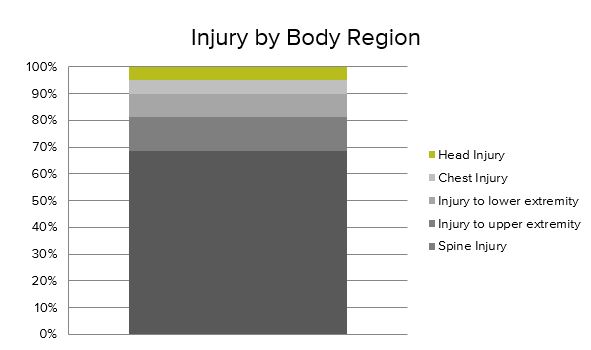
The Consequences
The trial and subsequent appeal of Nigel’s case resulted in a good outcome for Nigel. This case could very well have been unsuccessful if the police officer’s version of events had been believed by the judge.
The important thing to take from this decision is the importance of obtaining your own evidence relating to the circumstances of the accident. Do not rely wholly on the investigations undertaken by the police.
The outcome of this case is proof that despite the fact you may have sustained a head injury and do not have a good recollection of the accident you can still succeed in a claim. However, to ensure success, you need to take appropriate steps to gather all relevant evidence to support your case as early as possible. The best way to do that is to obtain legal representation as soon as possible after the accident so that your legal representatives can undertake any necessary investigations on your behalf.

If a driver intentionally hits or runs a cyclist off the road, they are liable for that cyclist's injuries.
And depending on circumstances of the accident, that might be irrespective of whether the cyclist is drunk, helmetless, riding two-abreast or riding out of the cycle lane.
We can all agree riding drunk and without a helmet is illegal.
But according to the courts (and we tend to agree with them), these actions won't always reduce your compensation, so long as they don't contribute to the accident.
Find out how the courts came to that conclusion (in Nominal Defendant v Rooskov [2012]) and what a cyclist's legal rights are when they are drunk and helmetless.
Nigel's Story
Let me introduce you to Nigel Rooskov.
Nigel was an active young man.
It was a Wednesday evening, and he had knocked off work early. He decided to join his workmates for a few drinks and a roast lunch at the bowls club not far from his home in Helensburgh, NSW.
He was about 6 schooners deep when he went to head home. It was about 3:30 pm.
Nigel was heading down Walker Street when he was clipped by a white car travelling at about 80km/hr.
Forced onto the shoulder, Nigel then hit a ditch and was catapulted from his bike.
He suffered extensive back injuries and lacerations to his face and upper body. He also suffered significant head injuries as he wasn’t wearing a helmet at the time of the accident.
Nigel was in and out of consciousness when the police and ambulance arrived.
He could recall that a car approached him, and he heard screeching like a car trying to brake but not much else. However, he didn't know the registration details of the vehicle that caused the accident or even its colour or type.
...And the car never stopped to see if Nigel was okay.
Nigel wanted to bring a claim against the driver who hit him.
But what happens when the at-fault driver isn’t known? How can you get the compensation you deserve?
A body exists under the Motor Accident Insurance Act called the Nominal Defendant. This body acts as a compulsory third party (CTP) insurer where a negligent driver's motor vehicle is unidentified and does not have CTP insurance.
In other words, where a car cannot be found or identified or does not have CTP insurance, a claim for compensation can be brought against the Nominal Defendant.
Nigel brought a claim against the Nominal Defendant.
But Nigel's claim wasn't as straightforward as he first thought. At trial, liability was in contention.
It would come as no surprise that the insurer believed that Nigel should be held somewhat responsible for the accident and his injuries, being that he was riding drunk and helmetless.
The insurer (aka Nominal Defendant) argued that Nigel was 40% to blame for the crash and his injuries. And as such Nigel's compensation should be reduced by 40%
The Court was forced to consider two critical issues:
- Whether Nigel’s intoxication contributed to the crash; and
- Whether his decision to not wear a helmet contributed to his injuries.
The Issues
Alcohol
Nigel had consumed around 6 schooners of heavy beer before the crash.
An expert gave evidence at trial that his blood-alcohol level was likely in the range of 0.196 – 0.221g.
He went on to say that a person in that range was at least ten times more likely to suffer injury.
And while Nigel’s blood alcohol level was almost 4 times that of the legal limit, the Court believed that this didn’t contribute to the accident.
Why?
“In Court, the burden of proving a cyclist contributed to their injuries is on the at-fault party.
Simply put, it was up to the insurer to prove that:
1
Nigel’s drunkenness would have interfered with his judgement and2
that this caused his injuries.
While Nigel may have been able to speed up his reaction to hearing the approaching car, it wouldn’t have changed his course of action. He would still have been driven into the shoulder of the road and fallen from his bike.
In the end, the Court accepted that Nigel was intoxicated but agreed that:
- There was “no evidence” that this contributed to the crash; and
- Even if he were sober, he would not have likely responded any differently.

Nigel wasn't penalised because he was riding drunk. Do you think that's fair? Have your say below.
Helmet
But just because it's a statistic, it doesn't mean that the law or the courts will agree.
The Court believed that not wearing a helmet:
- did not contribute much to Nigel's injuries; and
- the damage that resulted from this decision was only 'miniscule'.

Cyclists are required to wear helmets by law. Do you believe that Nigel should have been punished for doing something illegal? Have your say below.
Why?
If you consider how the Court's establish contributory negligence, the Nominal Defendant had to prove the decision not to wear a helmet would have caused the accident and increased his risk of injury. Again, the burden of proof is on the insurer.
It is true that not wearing a helmet increased Nigel’s risk of a head injury.
However, and this is important, had Nigel put a helmet on, it would not have changed the course of action or reduced the likelihood of his other significant injuries.
The car would have approached Nigel at speed, hit him and caused him to fall off his bike.
He would still have suffered significant bodily harm (like his back injury), and this would still have impacted his ability to work and live.
The Court mostly agreed with Nigel’s argument.
Ultimately, the Court did accept that Nigel decision to not wear a helmet meant he was guilty of contributing to his injuries. But they said that he was only 5% to blame, rather than the 40% the insurer claimed.
His compensation was reduced by 5% to $557,442.18.
What does this mean for cyclists?
While we would never condone riding intoxicated or without a helmet, this case does show that the Courts will protect cyclist’s rights first and foremost.
Drivers cannot shirk their duty of care by using a cyclist's actions against them... so long as those actions don't contribute to the accident.
The Courts will assess a situation on a case by case basis. They will look at the bigger picture.
If a cyclist’s wrongdoings did not contribute to the accident, then they should not be penalised for them.
Cyclists who suffer psych injuries from repetitive close passes would do well to understand the position that Courts will take to protect riders.
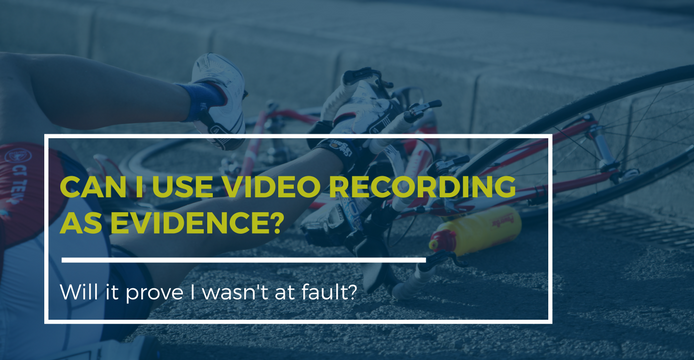
By Emily Billiau | Associate | [email protected]
Every week, we speak to cyclists who have been injured on our roads. And there is something common in a lot of the stories we hear:-
“I had a recording device on my bike and I captured the accident.
Can I use it?
Will it prove it wasn’t my fault?”
With the growing use of technology in today’s society, the use of video recording devices on bicycles and by cyclists has emerged as a growing trend.
Many cyclists use recording devices in hope that, should something go wrong, the footage captures the evidence they need to support their case.
We are often approached by cyclists who have a recording of an incident and who question whether the recording can be used as evidence in their injury claim.
The question then naturally becomes, is the recording admissible in evidence?
Pursuant to section 138 of the Evidence Act 1995, the Court has a discretion to exclude improperly or illegally obtained evidence. And so it must first be determined if the evidence was in fact obtained legally.
For example, if a recording was secretly (and without consent) obtained of a conversation between other persons and the cyclist was not involved in the conversation, the recording may be in contravention of Australian Law.
If it is found that the evidence was improperly or illegally obtained, the Courts cannot admit the evidence unless the desirability of admitting the evidence outweighs the undesirability of admitting the evidence. In considering the desirability of admitting such evidence, the Court needs to consider a number of factors pursuant to section 138 of the Evidence Act. They include:-
- The probative value of the evidence;
- The importance of the evidence in the proceeding;
- The nature of the evidence;
- The gravity of the contravention and whether it was deliberate or reckless.
So is your video footage admissible?
If you possess a recording of an incident you were involved in, you should consult your solicitor.
Ultimately, the different circumstances of each case and the context of each recording needs to be considered. Certainly, if the recording is admissible, it may be used to help you with your claim.
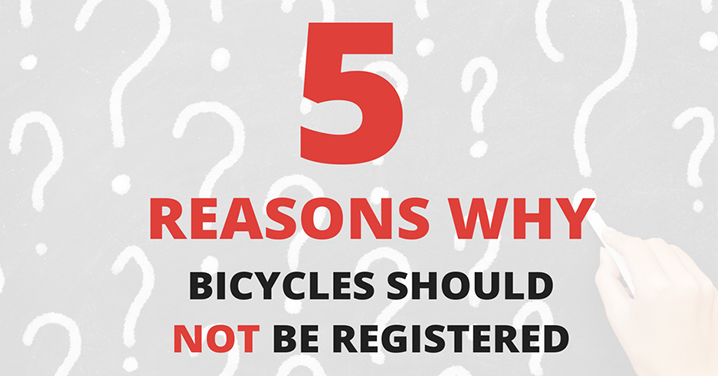
Hopping on his bike for his ride home, Jeff had decided to head home a little earlier than usual on Thursday in an effort to beat the usual peak-hour traffic. Little did he know that this would sadly be his last, as a Sydney bus would strike him at a busy road crossing in Neutral Bay.
This horrific accident would result in the re-ignition of the age-old debate as to whether bicycles should be licensed, this time in parliament. This is not uncommon. Every time a news report to do with bicycles is published, the push for bicycle registrations begins – even when it is often not the cyclist at fault.
Various articles and studies published by regulatory bodies and road safety experts from all over the world conclude that bicycle registration is not an effective way to generate funding for roads or to increase road safety.
Here are the five reasons why bicycle registrations should not be registered:
- Car registration does not “pay for the roads”.
There is a common misconception that motorists pay for building and maintaining roads through fees such as vehicle registration and licenses. Roads are actually funded through general taxation – as taxpayers, we all pay for them. Further, urban/suburban roads – those most commonly used by cyclists – are maintained by local councils. When a cyclist is riding locally, chances are their rent or rates payments help fund the road they’re on.
- The expense of implementing a bicycle registration scheme would outweigh any benefits.
A New South Wales government report prepared by the Sustainable Transport Manager says the annual cost for a driver’s licence covers the administrative costs of issuing that license only. Unless bicycle registration fees were considerably more expensive than car license fees (which is not likely), administration costs would guzzle up any potential revenue raised. And if the costs blew out, the funds would need to come out of everyone’s pockets – not just bike riders.This view is not unique to New South Wales. Bicycle registration has been considered across the globe, and the cost of the concept has consistently been found to outweigh any potential benefits. For example, in Ottawa, Canada it was estimated that a bicycle registration program would cost $100,000 a year, but only bring in $40,000 in revenue.
- Registration would discourage people from cycling.
One of the benefits of cycling is that it is a mode of transportation accessible to all, whether young or old. Sure, keen cyclists would likely register their bikes and continue to cycle. But would casual riders bother to sign up?If Sunday family bike rides or participation in initiatives such as Ride2Work Day and charity rides involved registering and paying a fee, many people would likely miss out on discovering the advantages of bike riding.From a public health perspective, it’s a nightmare as it add yet another barrier to Australian’s getting enough physical activity.
- No nation in the world has bike registration.At least not with number plates and significant fees. A recent literature review conducted for the Roads and Traffic Authority of New South Wales found that bicycle registration schemes have been trialled and ditched in a number of communities – often because it is too difficult and expensive to regulate. Recently in Houston, the law requiring cyclists to register their bicycle was abolished. It was found that out of the thousands of bicycles being used within the city, only about 100 were actually registered.
- Registering bicycles won’t fix the problem.
Other countries are leaps and bounds ahead of Australia when it comes to cycling, which suggests the real problem lies with our road culture. Getting more people in the saddle and cycling on our roads will increase awareness and bring added safety and acceptance – a goal we should all work towards.
Fun fact: Bicycles have existed for more than a century – longer than cars. Did you know that bicycle registration was debated in Australia in the 1930s, and knocked back? Perhaps, motorists need to become more accommodating of their two-wheeled comrades.
Written by Claire McHardy | Solicitor
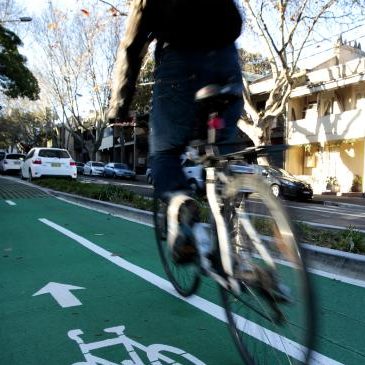
Unfortunately, unprotected bike routes and footpath cycling are the only options available to many Brisbane CBD workers – neither of which are attractive options to some cyclists during peak hour traffic.
Bicycle groups have identified the last 500 meters from established bikeways to work locations as the greatest problem areas and are campaigning for a safer alternative options.
Brisbane Central Business District Bicycle Users Group and Space For Cycling Brisbane have submitted a concept plan which they say will provide a protected bicycle lane within less than two blocks from every business within the CBD.
The type of lanes they propose to install are separated from car traffic by small plastic or cement barriers separating cyclists and cars, similar to the lanes that already exist on George Street.
The proposed grid includes lanes on the north-west side of Ann Street, the north-east side of Edward Street, the south-east side of Margaret Street and the north-east side of George Street linking it to the existing lane.The proposal also includes a lane on Herschel Street to link the grid to the riverside bikeway.
Queensland’s peak body for cycling, Bicycle Queensland, support the concept.
If installed, the bike lanes would bring Brisbane into line with other world cities including New York, London, Paris, and Sydney. In New York, the Department of Transport found that in the streets that had been installed with protected bike lanes, there was a 26% decrease in injuries.
Transport for NSW recently analysed the effectiveness of the bike lanes installed in central Sydney, and found that since the protected lanes were installed, the number of reported injuries had been halved on the sections of road where separated cycle ways existed, even though the number of cyclists using them has doubled.
Written by Emily Billiau and Claire McHardy





